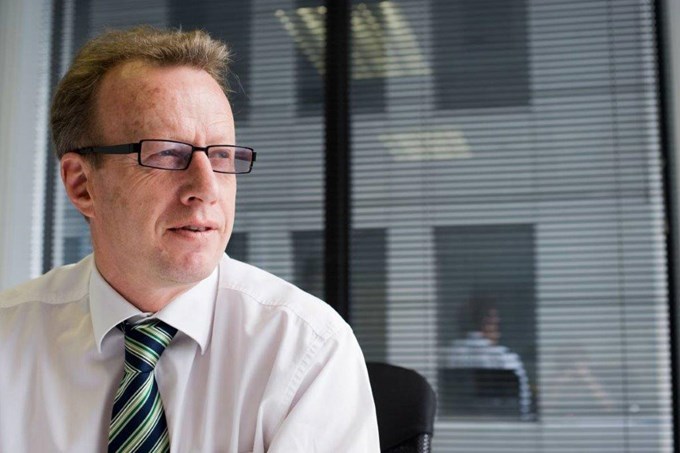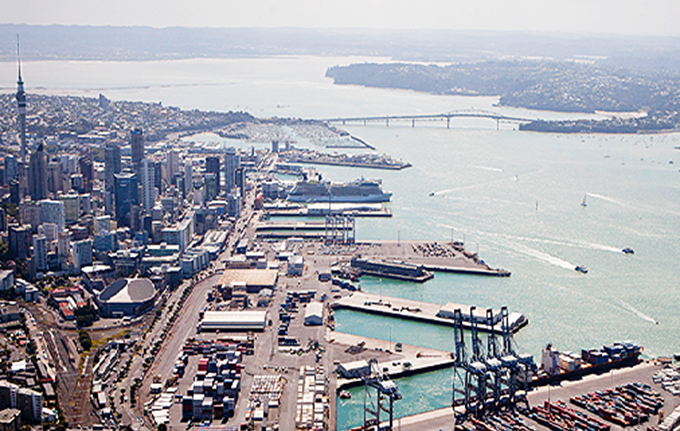Dr Rick Boven, Independent Chair of the Port Future Study (PFS) talks to OurAuckland about the study’s progress and what is coming up in 2016.
Studies about the port before have been done before, why is the Port Future Study happening now and what makes it different?
Yes, a number of studies in the past have looked at questions of port location and future freight demands.
This study is the first large-scale, systematic study attempting to address issues about Auckland’s growth and the best way to meet the city’s long-term needs for the provision of freight and cruise services. It's not over the next five or 10 years, it’s about what we do over the 30, 50 or 100 years.
It provides Aucklanders with direct interests in the port an opportunity to have their say on its future and considers the economic, social, environmental and cultural costs and benefits, and the feasibility of a range of options for the future of the port.
The role of the study is not to make any final or binding decisions, but to understand and analyse the options and to make a recommendation to the Auckland Council that represents the consensus viewpoint of those involved in the study.
This will allow Auckland Council to make well-informed decisions about future port requirements based on robust information.

If the study is independent of Auckland Council, who is doing the study?
The Port Future Study is made up of business, industry and community groups, marine recreation and heritage associations, environmental organisations, special interest groups and mana whenua.
The study has two groups. A Consensus Working Group (CWG) of 16 members, which were chosen from a larger Reference Group representing Auckland’s various communities with an interest in the port’s future.
The CWG has been asked to conduct the study over a 12-month period with the support of the Reference Group. The CWG have also been resourced to appoint consultants for the technical work of the study. The CWG governs and contributes strongly to the study and will provide recommendations to Auckland Council about the future of the port in July 2016.
You’re at the mid-point of the project. What have you achieved since the PFS began in 2015?
Initially the focus of the CWG was on collaborating effectively and on developing an in-depth understanding of issues around the port.
We have since agreed the study scope and appointed a consortium of independent consultants to identify and evaluate options for the port's long-term future.
This includes identifying potential locations for new, or additional, port facilities if the study concludes that the current port doesn’t have sufficient capacity for the long term. It also includes looking at different mixes of port operations.
The CWG works closely with the consultants to frame their work, understand future port requirements and on the criteria – which are economic, social, environmental and cultural – that will be used to assess the options for any port location recommendation.
What are some of your key milestones this year?
At present the consultants are drawing together a long list of alternative port locations where providing a port is technically feasible. They are also developing set of detailed criteria that will be used to thoroughly analyse the suitability of these locations.
This long list will be a very high-level and broad assessment of locations based only the site’s physical capacity for port services, such as water depth or distance from transport routes.
It’s a robust approach considering all possible locations and it meets the requirements of the study’s scope to identify a wide range of options.
The consultant’s work is ongoing so these options have not yet been analysed against any detailed criteria to evaluate their suitability. No final decisions have been made.
Next week (starting 15 February 2016), the CWG will meet with the larger Reference Group to get their views and feedback on the long list of options, the proposed assessment criteria and the project methodology.
Once the agreed criteria are applied to the long list of locations, a shorter list of options will emerge and be analysed in more detail including a cost/benefit analysis.
Over the rest of 2016, the consultant’s report, identifying and evaluating options for the long-term future of the port, will firstly be provided to the CWG in April. The CWG will then make recommendations to Auckland Council in July. The council will then go through its own decision-making process.


